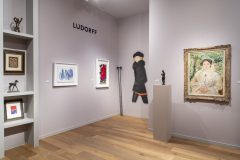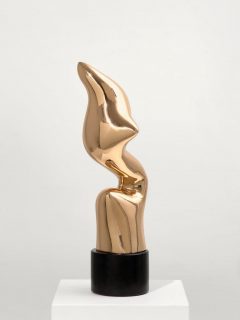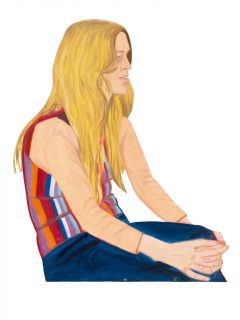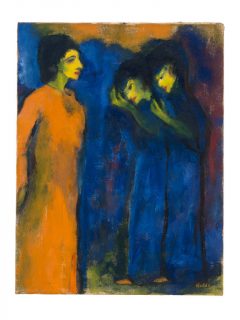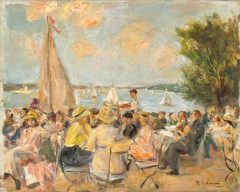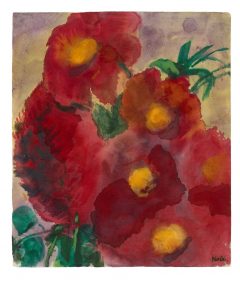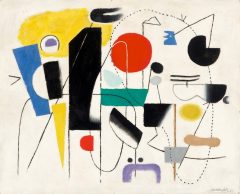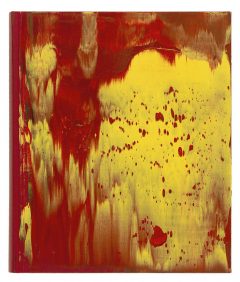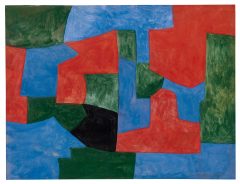We are pleased to announce that from June 25-30, 2022, after two years of absence due to the pandemic, we will finally return to exhibit at the prestigious fair in Maastricht, which celebrates its 35th anniversary this year.
At our booth 442 we will show you masterpieces of classical modern and post-war art. We are looking forward to your visit!
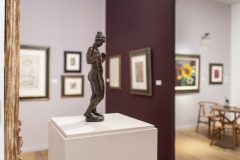
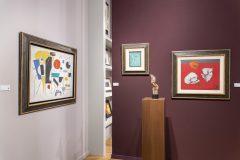
FAIR ACCESS SCHEDULE
Collectors Preview
FRIDAY JUNE 24, 10 AM - 7 PM
SATURDAY JUNE 25, 10 AM - 2 PM
Fair open to public
SATURDAY JUNE 25, 2 PM - 7 PM
SUNDAY JUNE 26 - THURSDAY JUNE 30, DAILY 10 AM - 7 PM
Among others, get excited about the following works:
Who is being paid homage to in this painting and for what reason is unclear. It is also unclear who the depicted persons are. Emil Nolde gives us no information. He is not a portrait painter in the true sense. This interest in depicting the character lying behind the surface and the essential qualities of the persons depicted led him to the free figure painting, the importance of which is repeatedly emphasised in the context of his work complex through his writings and letters.
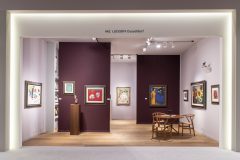
Standansicht TEFAF 2022
Liebermann painted "Das Gartenlokal an der Havel" in the summer of 1932, making it one of the last pictures of café terraces in his oeuvre. The cheerfulness and beauty of these scenes simply did not leave the artist. Despite old age and the stifling political situation, great enthusiasm for garden paintings - both in oil and pastel - remained unbroken in the early 1930s.
Manuel Ludorff about our highlights
At our stand 442, we will show you exclusive masterpieces of Classical Modernism, for example by Max Liebermann or Emil Nolde, selected works of post-war art by Willi Baumeister or Serge Poliakoff as well as contemporary positions such as Alex Katz or Gerhard Richter.
Serge Poliakoff findet über die Farbtheorien des Orphismus und den Gestaltungsprinzipien des niederländischen De Stijl zu einem synthetischen Kubismus, der sich in einer patchworkartigen, von den Rändern zur Mitte hin verdichtenden Bildstruktur und in Farbflächen von großer Intensität äußert. Zunächst geben graphische Liniennetze seinen Bildern kompositorischen Halt. Doch bald entsteht unter seinen Händen eine Bildordnung aus freien, asymmetrischen Farbformen, die ein gleichgewichtiges System ausbilden. Poliakoff beschränkt sich hierbei auf einen relativ knappen Formvorrat, mit dem er auch die gemäßigten Bildformate zu einer monumentalen Wirkung steigert. Die Farbe, anfangs noch tonig gedämpft, entfaltet im Laufe der Jahre einen immer stärkeren, bisweilen festlichen Glanz, der häufig in effektvollem Kontrast zu dunkleren Bildfeldern steht. Poliakoffs Überlegungen kreisen zunehmend um die Kraft der Farbe.
